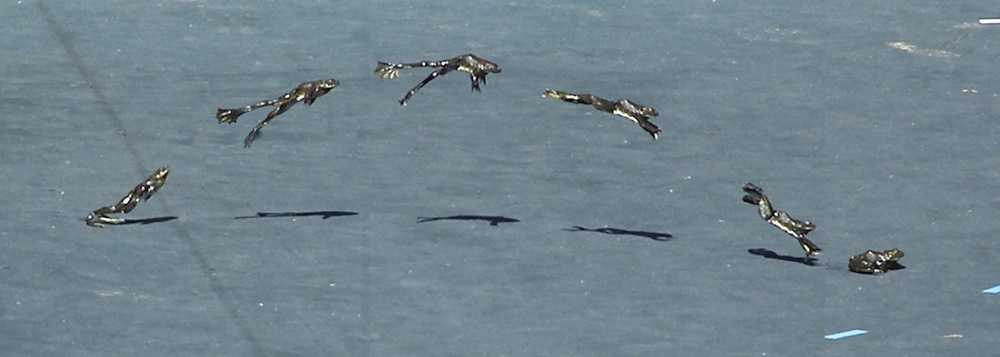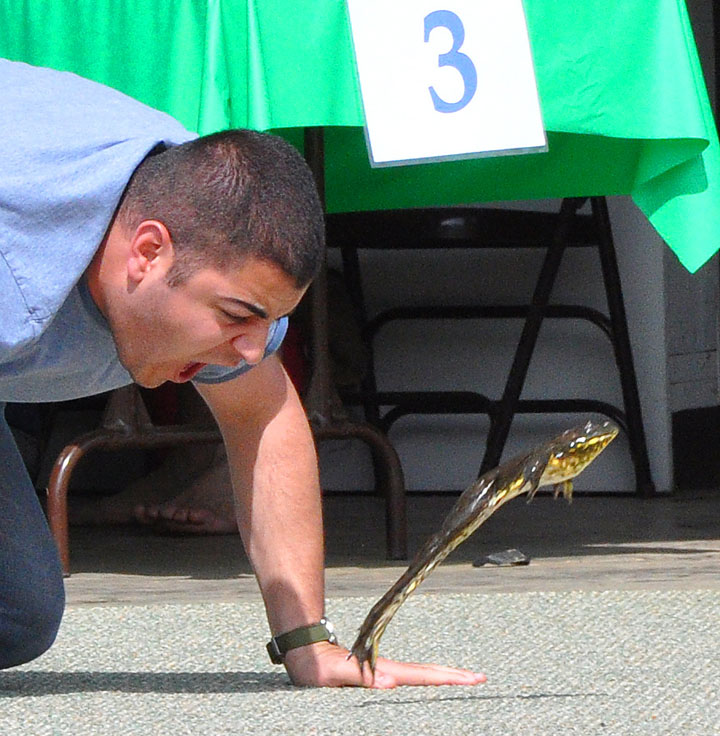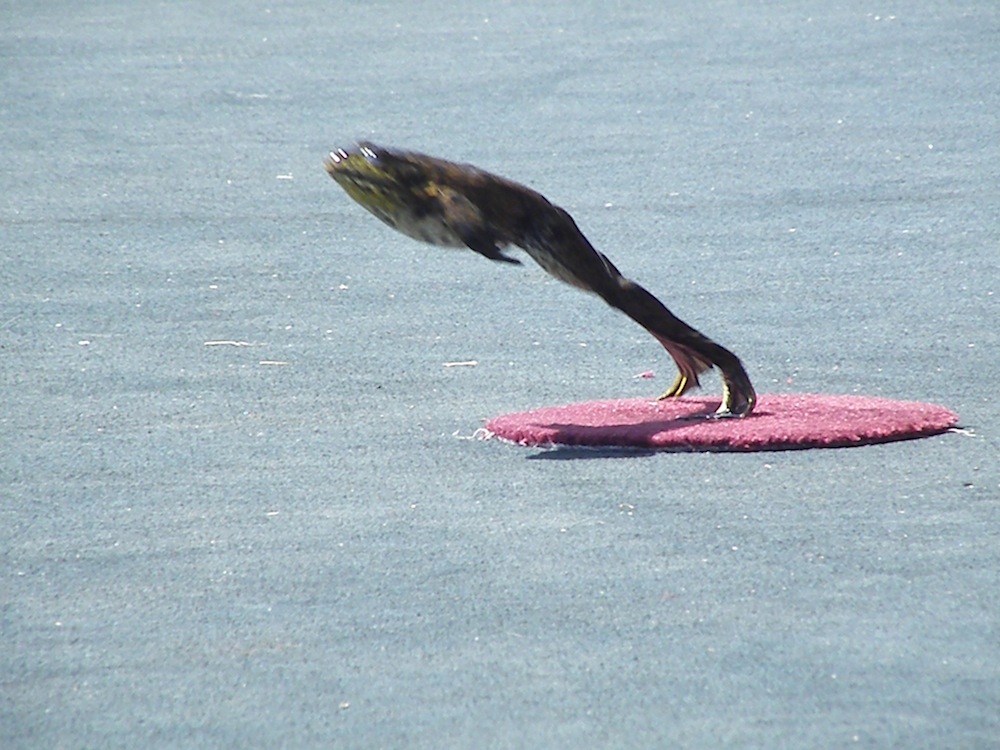Secrets to the Biggest Frog Jumps Ever Revealed

When Mark Twain authored "The Celebrated Jumping Frog of Calaveras County" in 1865, he probably didn't expect the short story would be the spark that would result in scientists realizing that their experiments vastly underestimate how far a bullfrog can leap, thus calling into question an entire body of research on muscle physiology.
Probably.
A new study of bullfrogs at a frog-jumping competition inspired by Twain's words has now revealed, however, that scientists had no idea what the bullfrog (Rana catesbeiana) can do. The leaps they'd been recording in the lab are nothing compared with the 7.2-foot-long (2.2 meters) hops completed by frogs at the Calaveras County Fair and Jumping Frog Jubilee in Angels Camp, Calif.
"We feel like we put a fair amount of thought into how to motivate animals to jump, but didn't realize that all these little details could add up to make not a small difference, but a really big difference in performance," said study researcher Thomas Roberts, who investigates the evolution of musculoskeletal design at Brown University in Rhode Island.

"Some of the jumps were really pretty spectacular," Roberts told LiveScience.
Champion leapers
Roberts and his colleagues use frogs as a way to study how muscles power movement, which requires an understanding of muscles' maximum performance. The researchers have long been troubled, however, that the Guinness Book of World Records considers the longest bullfrog jump to be at least 7.15 feet (2.18 m). The longest bullfrog leap recorded in the scientific literature was only 4.2 feet (1.29 m). [Gallery of Wonders: The 7 Weirdest World Records]
Sign up for the Live Science daily newsletter now
Get the world’s most fascinating discoveries delivered straight to your inbox.
"That really worried us for years," Roberts said.
The world record was set at the Calaveras County Fair and Jumping Frog Jubilee, which dates back to 1893. The fair features a competitive frog jump inspired by Twain's tale of a gambler who lost his own frog jump to a cheating stranger. Roberts and his colleagues decided to take their own measurements at the fair and try to figure out what made the Calaveras frogs such great leapers.
They quickly found that frog-jumping is serious business, and although competitors were helpful, they did keep some trade secrets, such as their frog-handling techniques. Nevertheless, the researchers' measurements revealed that whatever those secrets are, they work.
High-definition video of the frog jumps revealed most of the frogs — even "rentals" jumped by nonprofessional contestants — beat out lab frogs easily. Of the 3,124 jumps recorded, 1,804, or 58 percent, exceeded the longest frog jump ever recorded in the lab. The longest jump recorded was 7.2 feet (2.2 m).
Froggy motivation
Frogs are caught just prior to the competition, most in the Sacramento-San Joaquin River Delta, and released soon after, suggesting there's nothing special about the animals themselves, Thomas said. More likely, he said, generations of "frog jockeys" have refined and passed down the best motivational techniques to coax maximum leaps from their amphibious competitors.
Among the apparent tricks were keeping frogs in a warm environment in order to better prepare the muscles to fire. Professional frog jockeys also followed a pattern of rubbing their frogs' legs, dropping them onto the starting pad from a short height and then lunging at the frog headfirst to trigger its flight, the researchers report today (Oct. 16) in The Journal of Experimental Biology.

"We knew we probably weren't always getting 105 percent out of these guys, but we thought we were doing pretty well," Roberts said of the laboratory bullfrogs. But the Calaveras County results proved they weren't.
The frog competition revealed some tips that researchers can take back to the lab, Roberts said, such as paying attention to small details in the visual environment and studying large numbers of jumps to make sure the very best are being captured.
"At a place as unusual as a county fair, you can learn something new," Roberts said.
Follow Stephanie Pappas on Twitter and Google+. Follow us @livescience, Facebook & Google+. Original article on LiveScience.

Stephanie Pappas is a contributing writer for Live Science, covering topics ranging from geoscience to archaeology to the human brain and behavior. She was previously a senior writer for Live Science but is now a freelancer based in Denver, Colorado, and regularly contributes to Scientific American and The Monitor, the monthly magazine of the American Psychological Association. Stephanie received a bachelor's degree in psychology from the University of South Carolina and a graduate certificate in science communication from the University of California, Santa Cruz.









